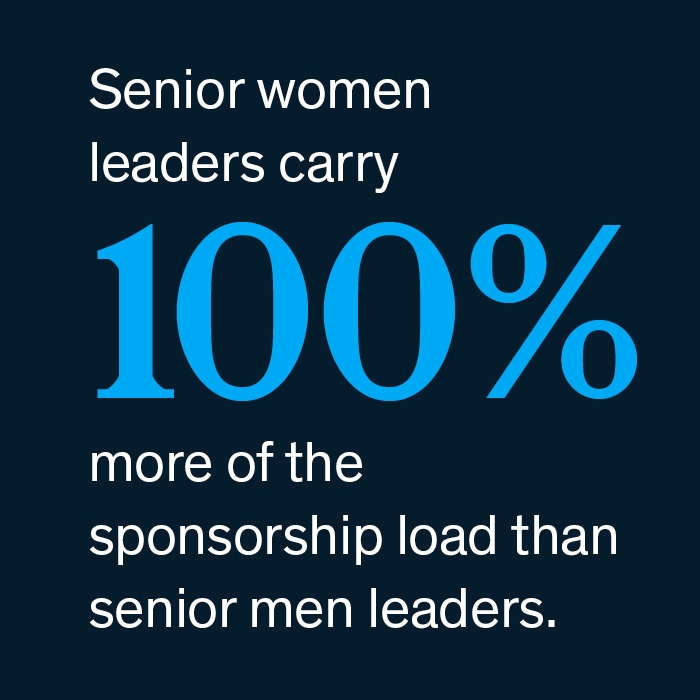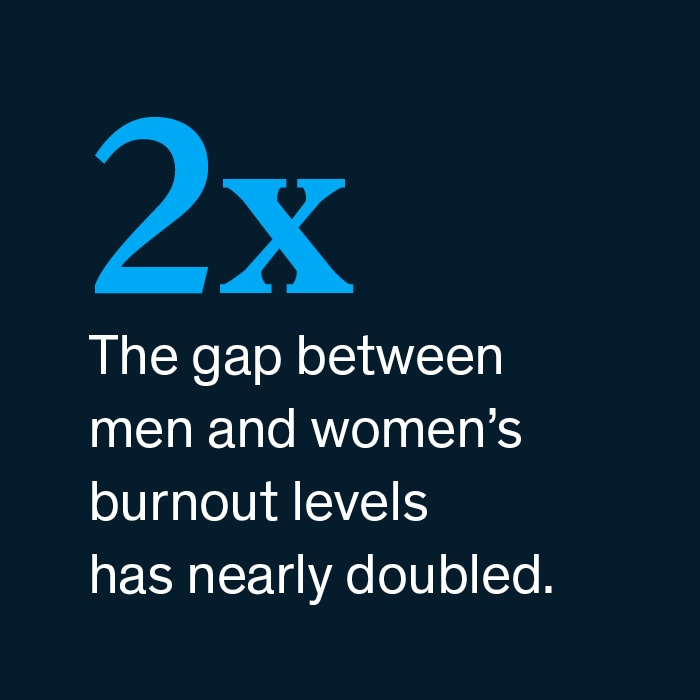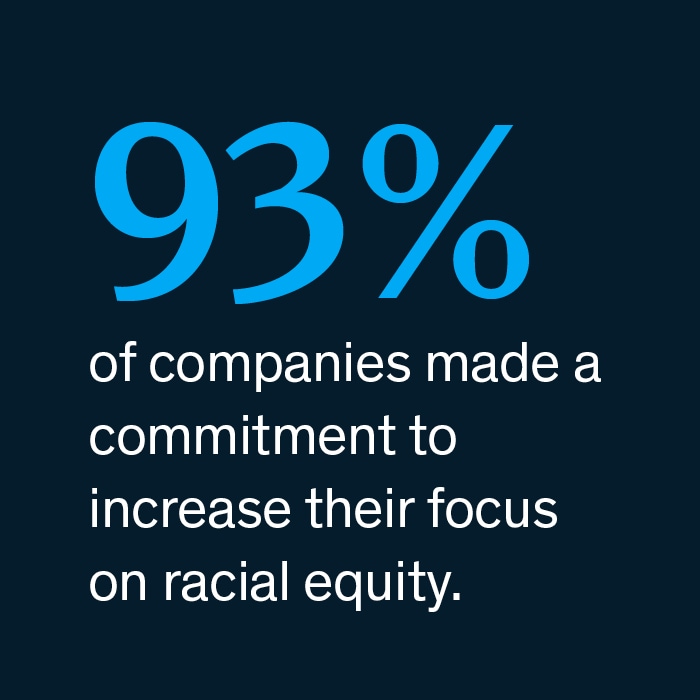
It’s been seven years since the release of our first annual Women in the Workplace report, where McKinsey partners with Lean In to analyze workplace data and the experiences of men and women from the previous year.
Today we release the 2021 report—the first to include an entire year’s worth of findings during the pandemic.
Now that we’ve had a year to examine just exactly how women in the workplace have been doing through a time like no other, we explore our most burning questions below with Jess Huang, a McKinsey partner and co-leader of the research.
Have more women left corporate jobs?

Not exactly, Jess explains, but not much progress has been made either. Women—especially those who manage teams—are more burned out than men.
“While women have made small gains at almost every level of the pipeline, including the C-suite,” Jess explains, “women of color continue to be dramatically underrepresented at high levels. And because of the persistent broken rung at the first step up to manager, there are just not enough women in middle management to promote to senior leadership.”
When it comes to jobs of the future—like engineering and product management—that call for technical skills, the representation of women lags at every level. Only 34 percent of the entry-level roles in engineering and product management were women in 2020, compared to 48 percent in our study’s overall benchmark.
Are companies at risk?

They may be. The good news is that women are stepping up to support employee well-being and advance diversity, equity, and inclusion (DEI) in their companies. The bad news is that companies are not recognizing it.
Throughout the pandemic, Jess explains, women senior leaders have done 60 percent more to provide emotional support to employees than their male counterparts. “This focus on supporting employees and colleagues is the leadership that companies have so badly needed during these last two years of added pressure and strain,” says Jess.
While 87 percent of companies say it’s critical for managers to support employee well-being, only 25 percent of them formally recognize this work. Perhaps this is the result of DEI work so often being relegated to “new office housework,” as Jess puts it—“the kind of work that contributes to the business but isn’t formally recognized in performance reviews nor leads to advancement or compensation.”
You won’t have sustainable inclusive growth if you’re not rewarding the type of work that drives that outcome.
Where can progress be made?

A recurring theme from the report is a disconnect between intention and action. For example, despite an increase in the number of white employees who say they are allies of women of color (77 percent), only 20 percent regularly advocate for opportunities for them. And although over 90 percent of companies made commitments to focus on racial equity, only 40 percent of employees think companies have followed through.
To help bridge this gap between companies and employees, Jess explains, leaders can be held accountable by tracking diversity metrics and tying outcomes to performance reviews and financial incentives. Additionally, programs to combat bias in performance reviews and hiring can be implemented to address the broken rung. And when it comes to offering support to employees, having policies and resources in place like on-site childcare, parental leave, and mental health services can have a meaningful impact.

Women in the Workplace 2021
Many leading companies have made great headway in acting on these measures already, says Jess, but more needs to be done at an individual level. “You won’t have sustainable inclusive growth if you’re not rewarding the type of work that drives that outcome,” she adds. “What gets measured, rewarded, and recognized is what ultimately gets done.”